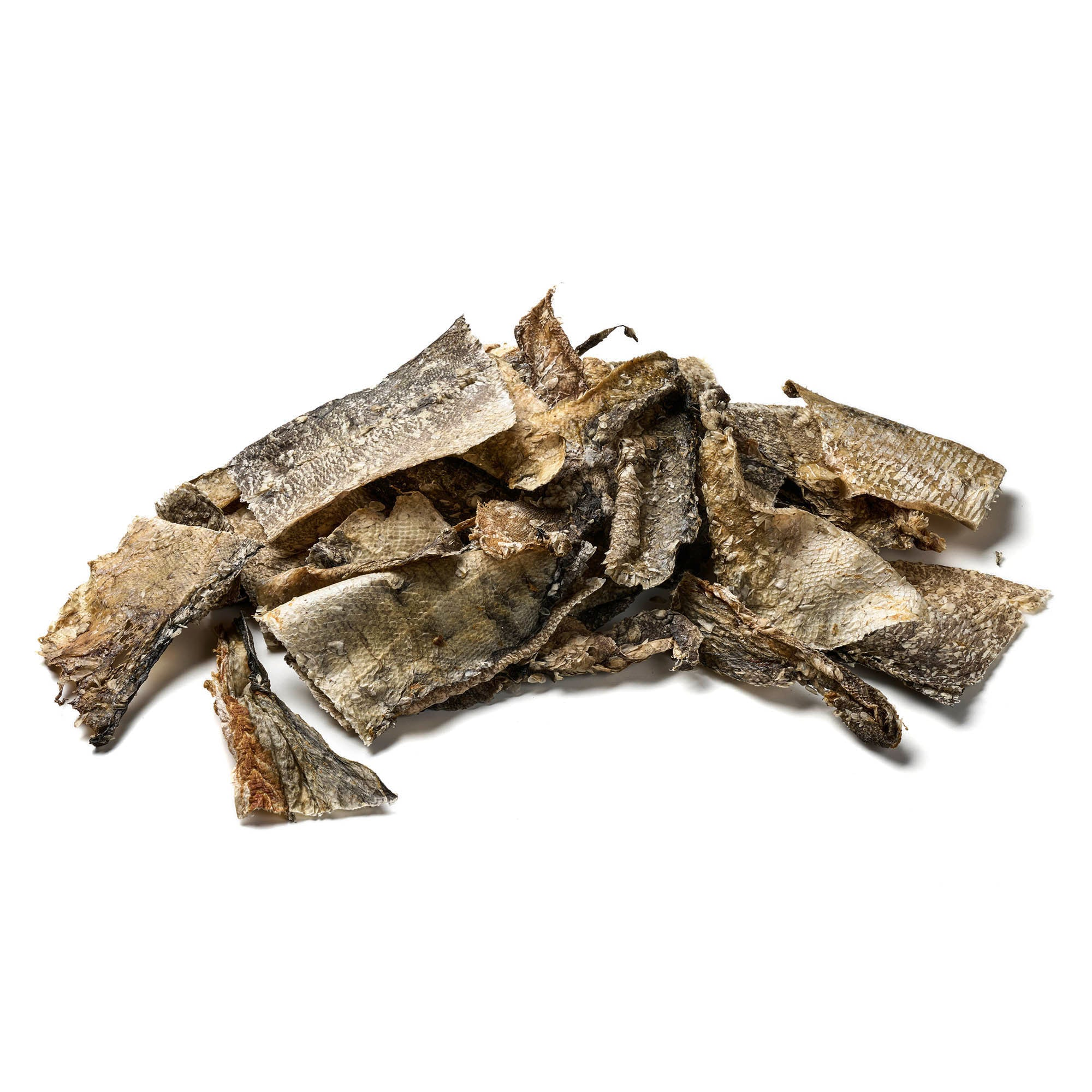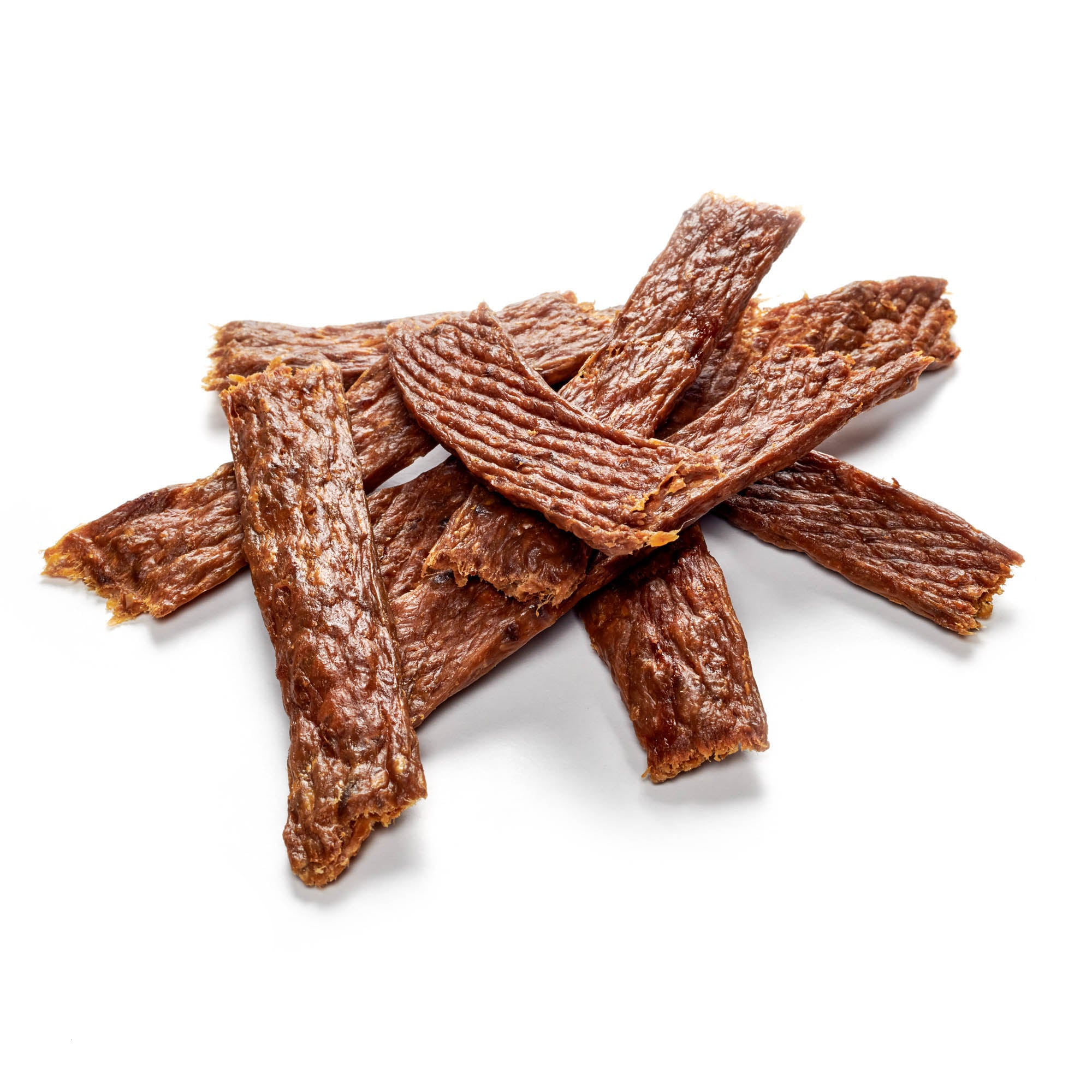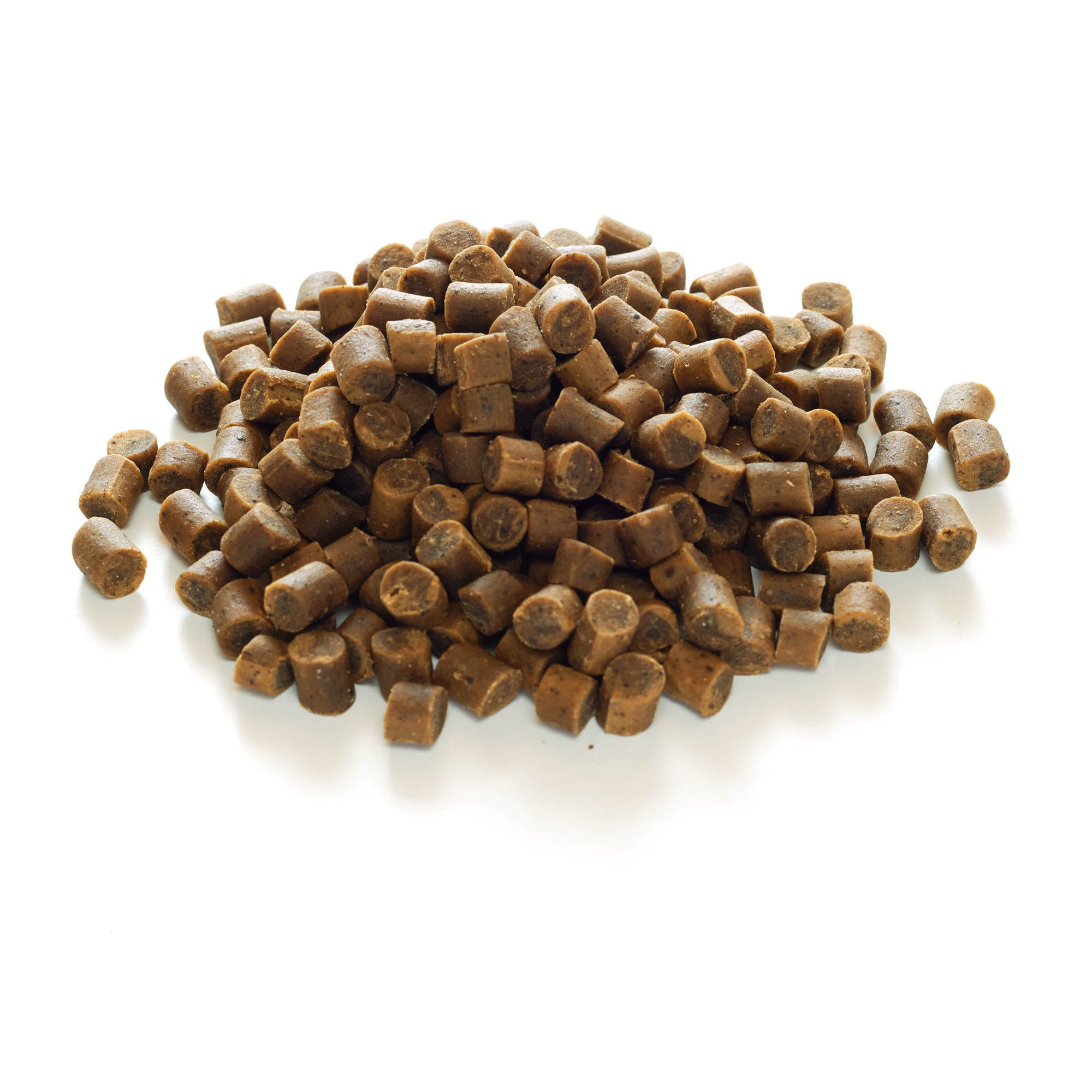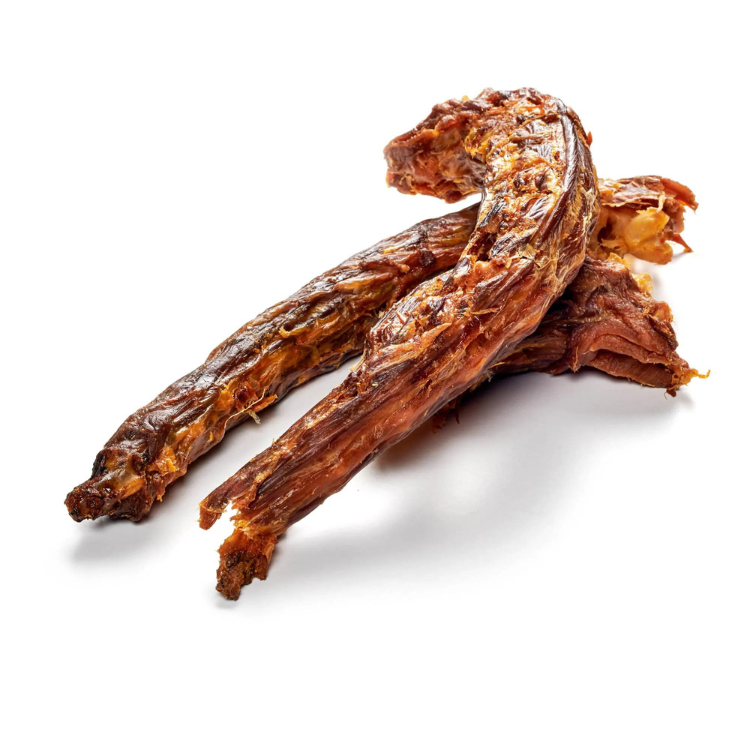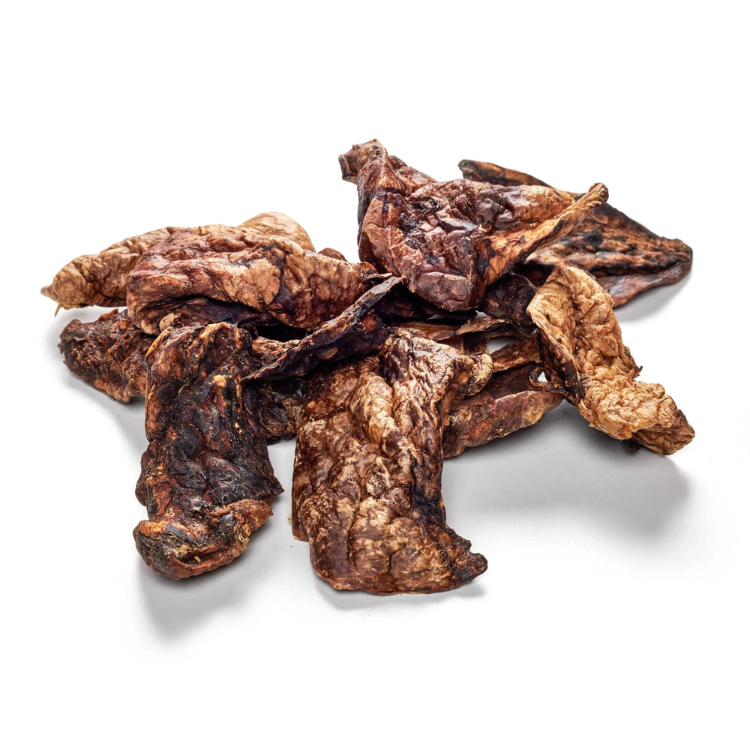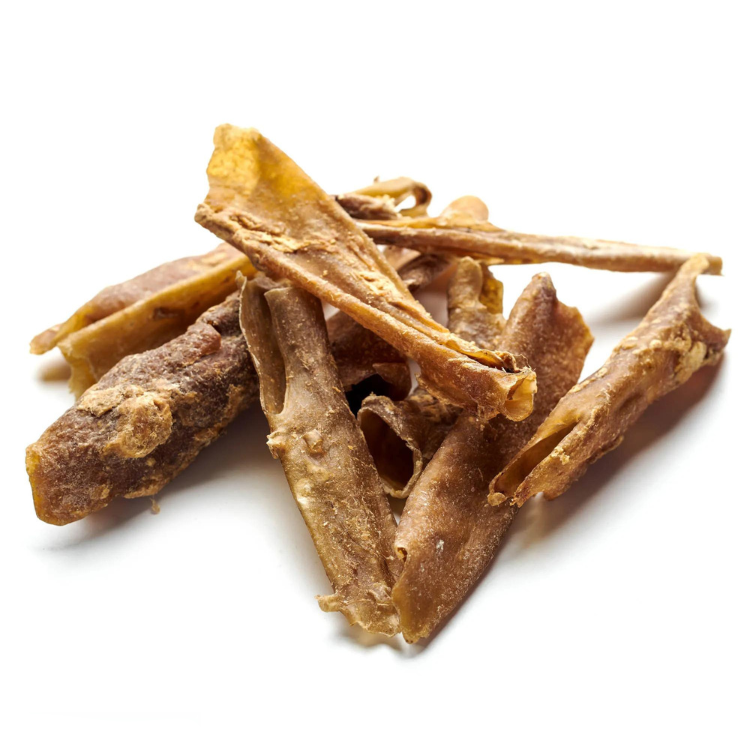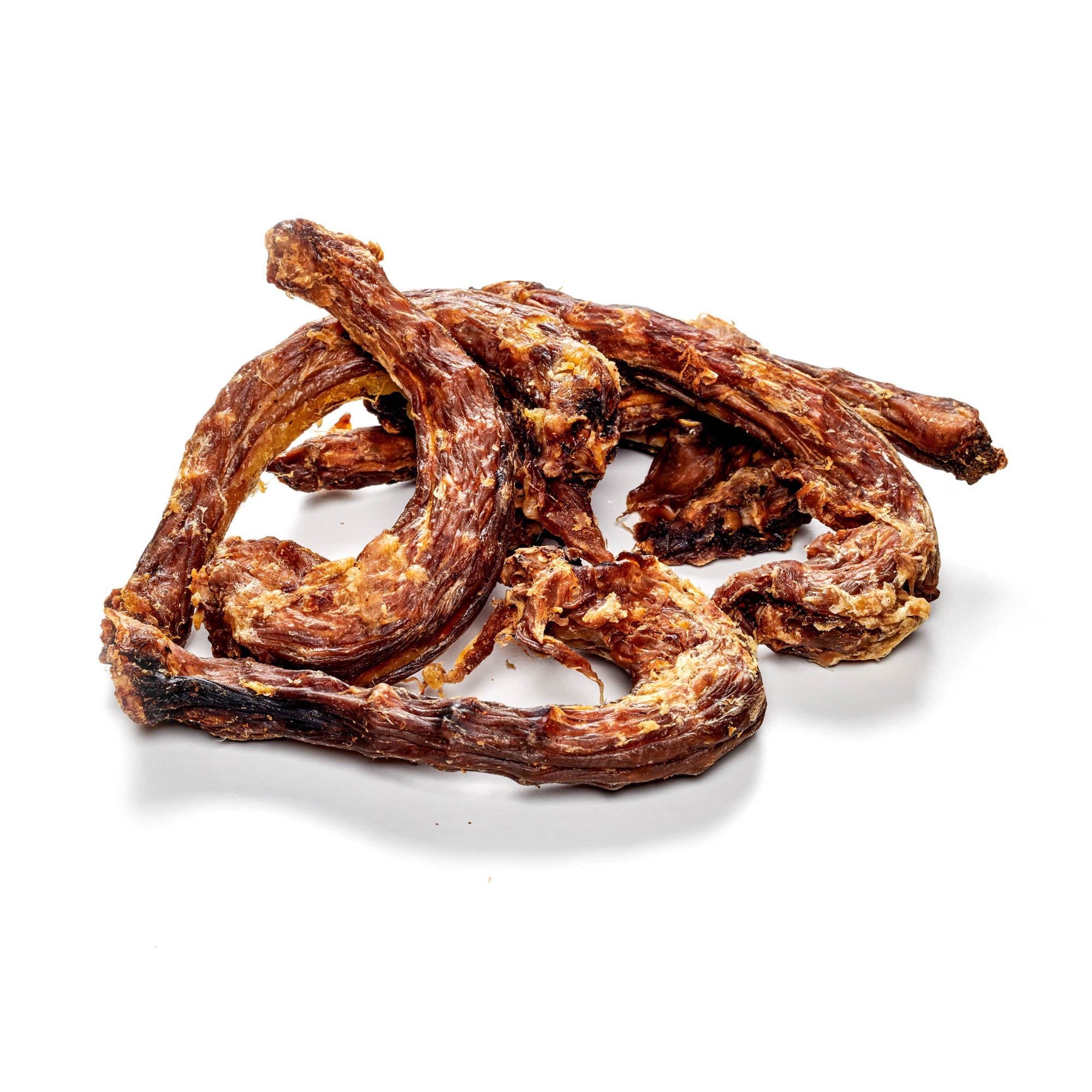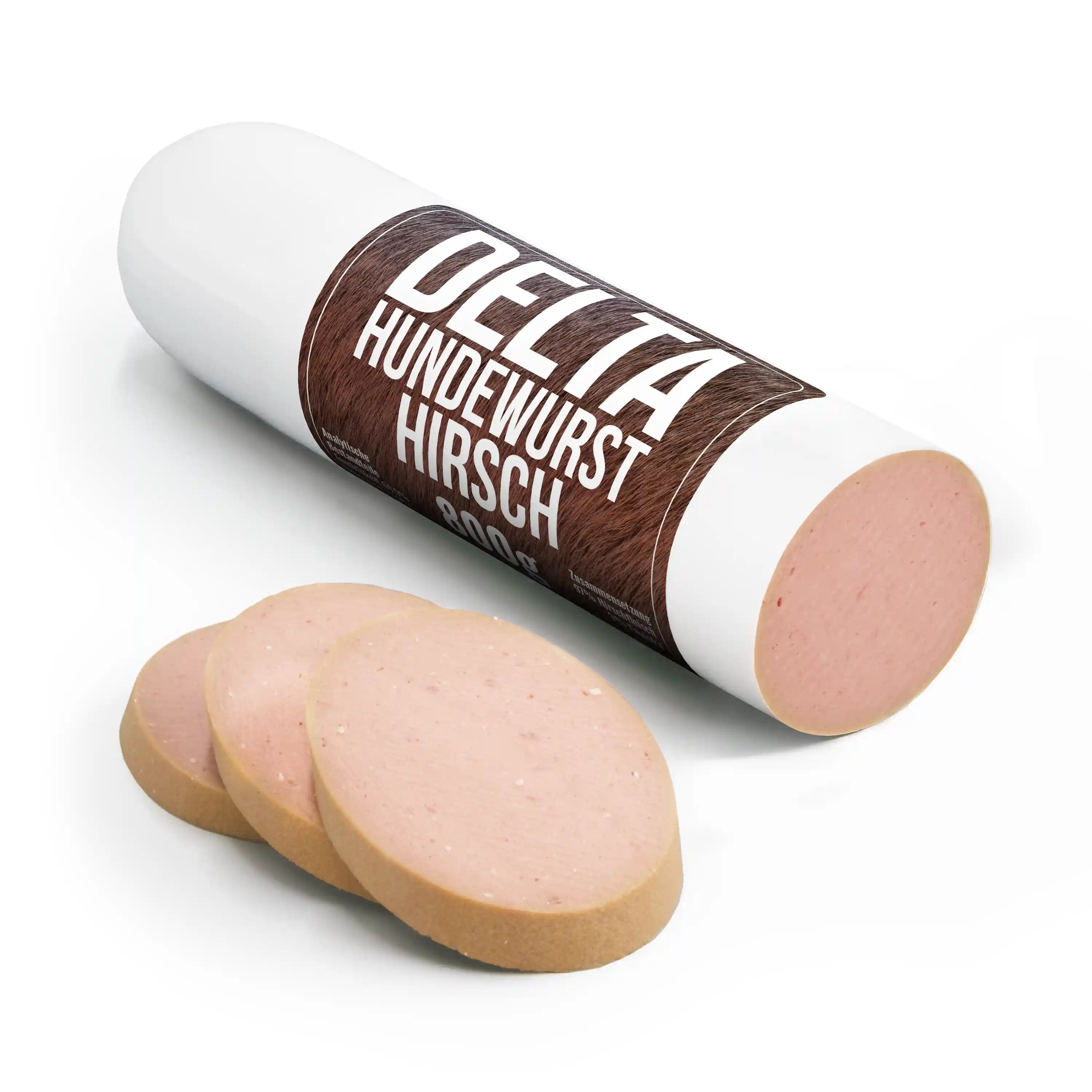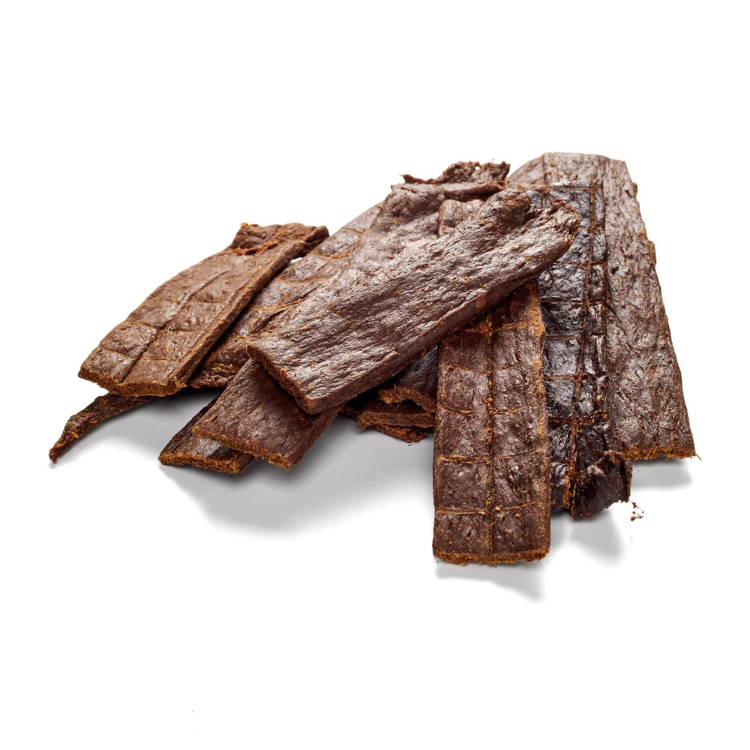
Hanoverian Bloodhound
Share
The Hanoverian Hound is characterized by its strong tracking ability and its calm, reliable nature. It is particularly well suited to hunting and tracking wild animals due to its excellent nose work. However, this breed is not necessarily suitable as a pet and requires consistent training.
Content: Hanoverian Hound
- profile
- Special features
- Nutrition
- Health and care
- The right accessories
- Origin & History
- Conclusion
Discover delicious dog snacks directly from our range!
Hanoverian Hound - Profile
- Character: Calm, reliable, persistent
- Size: Medium
- Height: 50-55cm
- Weight: 30-40 kg
- Life expectancy: 10-12 years
- Coat type: Short, dense
- Colour: Red to deer red, with or without black markings
- Special features: A tracking dog with excellent nose work, specialised in tracking game
- FCI Group: Hounds, Scenthounds and Related Breeds
Hanoverian Hound - Special characteristics
The Hanoverian Scenthound is a German dog breed recognized by the FCI and belongs to Group 6 (Scenthounds, Scenthounds , Related Breeds), Section 2 (Scenthounds). It is characterized by a powerful, elongated build and has a dense, smooth coat in ochre yellow with red markings or in gray-brown. The color shades can vary from light red to dark deer red, and the brindling can be of varying degrees. The Hanoverian Scenthound is a specialist in tracking game, as it follows the scent of the wounded game and shows the hunter where it is. This breed is affectionate towards its family, but is not generally suitable as a pure companion dog or family dog. They are mainly given to hunters or foresters, and a working test for hunting and appropriate training are required. The Hanoverian Scenthound is characterized by its calm and friendly character and is an ideal hunting companion. It is very attached to its owners and shows excellent trainability. Although he can be willful at times, he adapts well and is happy to let others take the lead. However, experienced and consistent dog owners are required to properly train and manage this breed.
Hanoverian Hound - What should be considered regarding nutrition?
The diet of a Hanoverian Hound should be balanced, with meat, carbohydrates, fiber, fat, vitamins and minerals. Preservatives should be avoided and fresh water should always be available. For hunting dogs, the diet can be adjusted according to requirements. Before hunting, the dog should not be fed to avoid stomach problems. When working in the field, a high-fat diet with a higher protein content may be useful to meet energy needs. The amount of food should be divided into two meals a day.
Reward your best friend with our dog treats!
Hanoverian Hound - Health and Care
The Hanoverian Hound is generally a hardy and healthy breed of dog that requires little maintenance. Their short coats require occasional brushing, but otherwise grooming is straightforward. However, these dogs require a lot of exercise and space, so short walks around the block are not enough. The Hanoverian Hound is not a suitable dog for apartment or city life. A house with a large yard would be ideal for this breed. If you are considering getting a Hanoverian Hound, make sure you can provide them with plenty of space and regular hunting or work training. These dogs are friendly and eager to learn, but they require clear leadership and meaningful activity. Since they are hunting dogs, they enjoy working with their noses and tracking scents. Nose work, such as searching for treats, is an excellent way to keep them mentally and physically active. After each use or training, the dog should be checked for any injuries, as even small scratches can become infected. It is important to remove burrs and thorns immediately to avoid discomfort. Special attention should be paid to the ears, as floppy ears can be susceptible to contamination and infections. Regular checking and cleaning of the ears is therefore advisable to save the dog unnecessary suffering and veterinary costs.
Hanoverian Hound - The right accessories
The Hanoverian Hound is a hunting specialist and requires special equipment for hunting. This includes dog harnesses that do not hinder tracking through thickets and a protective dog vest with markings as a hunting dog. Special dummies, scents and a training whistle are required for hunting training. Apart from the hunting equipment, he needs the usual dog equipment such as a leash, collar, toys, brush and a place to sleep.
Hanoverian Hound - Origin & History
The history of hunting dogs dates back to early Mediterranean and Western Asian cultures, and was documented during the Bronze Age. Hunting was long a privilege of wealthy lords in the Middle Ages, who used special dogs for these purposes, known as "master dogs" or lead dogs. The Hanoverian Scenthound is an example of a hunting dog developed specifically for hunting after the advent of firearms. Its job was to track and locate injured and bleeding animals such as deer and wild boar after being shot. The German Hound evolved from the more original European Bracken and was developed through selective breeding. In the past, Heidebracken were crossed with old German Hounds, although the Heidebracke is now considered extinct. The name Hanoverian Scenthound derives from the Hanoverian Hunters' Court in what was then the Kingdom of Hanover, where the breed was largely formed. During breeding, special attention was paid to body shape as well as performance when working with wild animals such as deer and wild boar. In 1984, the Hirschmann Association was founded, which is dedicated to continuing the breeding tradition and preserving the breed. This association has helped to standardize the breed and maintain the stud book standard. Today, the association is the only German breeder of the Hanoverian Scenthound and continues to work to preserve and care for this unique breed.
Conclusion
The Hanoverian Hound is a robust hunting dog that needs a lot of exercise and mental challenges. They are friendly and eager to learn, but also independent and need consistent leadership. They are easy to care for, but require regular checks for injuries after hunting. A large garden and the opportunity to hunt or do nose work are ideal for this breed.
Discover delicious dog snacks directly from our range!

